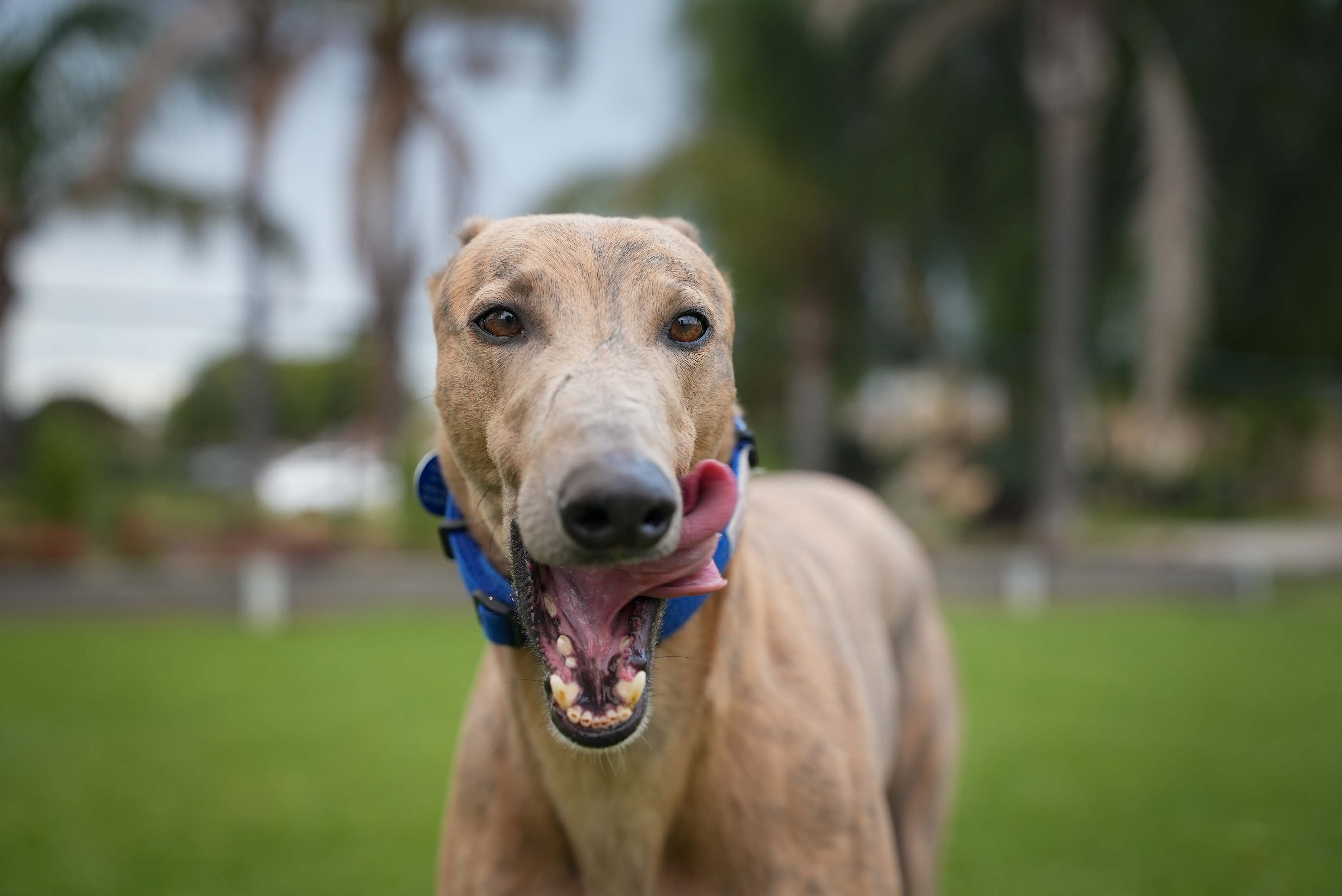Need To Know Info For Greyhounds In Hot Weather
Jan 21, 2022

To understand how hot weather affects greyhounds, you first need to understand the difference between people and greys, and the different ways in which our bodies work to maintain a stable operating temperature. For humans, body sweat is used to cool our skin, but greyhounds can’t sweat all over like we do, instead only sweating through glands on the pads of their feet and nose. Greyhounds instead rely on evaporative cooling from their respiratory system – panting to move air across wet membranes.
This system of cooling has limitations and has important consequences for the greyhound. Firstly, the evaporation can only occur if the humidity in the air allows it – the higher the humidity the less this system works. So, when in a confined space such as a car, trailer or kennel, humidity can increase quickly as evaporated water from the greyhound stays in the air.
The second problem with this sort of cooling is that it can lead to huge losses of body fluids and can alter the acid-base balance in the dog’s blood from the increased amount of oxygen-carbon dioxide exchange in the lungs. These changes are hard to measure because you may not be able to actually see them.
What will you see?
Heat Stress – panting, salivating, increased heart rate, listlessness, vocalisation/whining
Heat Stroke – excessive or loud panting, thick saliva, vomiting, diarrhoea, wobbliness, strange behaviour, seizures, collapse, and death
What can you do?
- Stop all exercise
- Move to a shaded area or, ideally, into an air-conditioned area
- Provide plenty of cool, fresh water
- Provide plenty of ventilation to move evaporated fluid away and to drop the humidity levels
- Gently cool the greyhound – they can lay on wet towels, be wiped down or hosed with cool water. Make sure if you are using wet towels or ‘Cooling Coats’ that they feel cool to touch and that there is a breeze or ventilation as these methods rely on evaporation for their cooling effects too – if they dry out or there is no ventilation then it’s similar to wearing a blanket or rug.
- Avoid using iced water on the greyhound’s body as this can cause the blood vessels in the skin to contract, which will slow the cooling process down because the hot blood is no longer coming to the surface where it can lose heat. Iced water can be used on the feet though, and covered ice packs can be placed in between the dog’s thighs and in their ‘arm-pits’.
What if I think a greyhound is moving into heat stroke?
Heat stroke is more serious as there can be delayed complications due to organ damage. The priority is to lower the body temperature quickly, but care has to be taken not to cause hypothermia (too cold) in the process. Any dog with a rectal temperature over 41.6 degrees is considered dangerously hot.
These dogs need to be taken to the vet immediately, where cold intravenous fluids and cool water enemas can be done. The vet can also monitor for complications and give medications to aid in preventing some of the consequences of a body temperature that’s too high – such as brain swelling and shock.


